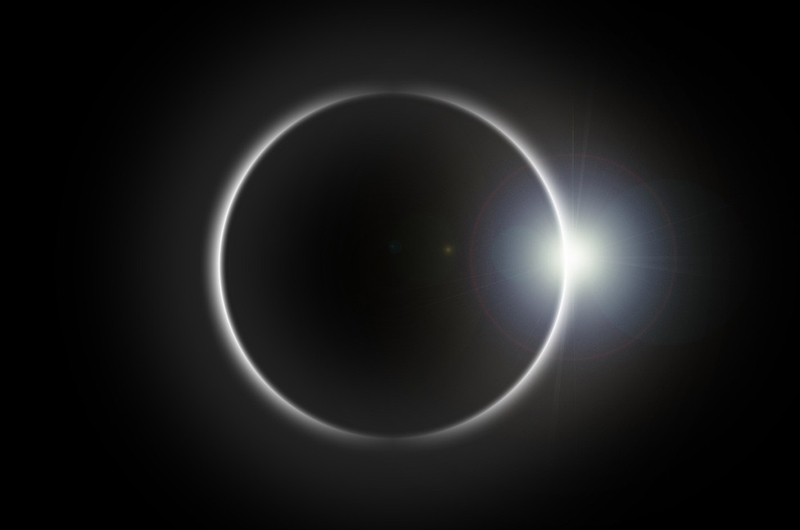Here are two fortuitously coincidental facts: the sun is approximately 400 times further away from us as the moon, and the moon is approximately 400 times smaller than the sun. Because of that cosmic congruence, the moon and the sun appear to be the same size. The reason it’s fortuitous is that, during a solar eclipse, the moon exactly covers the face of the sun, allowing spectators a rare chance to see the sun’s atmosphere, or corona.
On August 21, there will be an eclipse of the sun which will be visible everywhere in the continental United States. Here in Arizona, it will start around 9:15 a.m., and reach its peak at approximately 10:35 a.m. Although it won’t be a total eclipse for Arizonans, it will still be an exciting event.
Before science was able to predict and explain solar eclipses, they were viewed as frightening omens. The Chinese thought that the sun’s disappearance was caused by a dragon eating the sun, and would bang on drums to scare the dragon away. The Native American Pomo tribe thought an eclipse was from a bear taking a bite out of the sun. The ancient Greeks thought eclipses were caused by angry gods and that their appearance was the start of a period of disasters and destruction, as did the Tewa tribe in New Mexico.
Today, we understand that a solar eclipse is caused by the moon passing between the earth and the sun, causing its shadow to sweep across our planet in the course of its orbit. The area in which the moon can be seen to completely cover the sun is fairly small. The percent of the sun that will be blocked by the moon depends on one’s distance from the area of totality. Arizonans will see about 60 percent of the sun blocked by the moon during the upcoming eclipse.
The most important thing to remember about the eclipse is that it must be viewed safely. Looking at the sun can cause permanent damage to the eyes, even though the sun will be partially covered by the moon. There are various ways to safely view the eclipse, including an easily constructed pinhole camera, which can be made from a shoebox. Plus, local libraries will be distributing 2 million pairs of free eclipse-viewing glasses, so head to your favorite branch before they’re gone.
Try not to miss this cosmological event. There will be other solar eclipses for Arizona residents in the years ahead, but not too many, and we won’t have this good a view of one until August 12, 2045. That’s a long wait, even for a chance to see a dragon eat the sun.


Leave a Reply